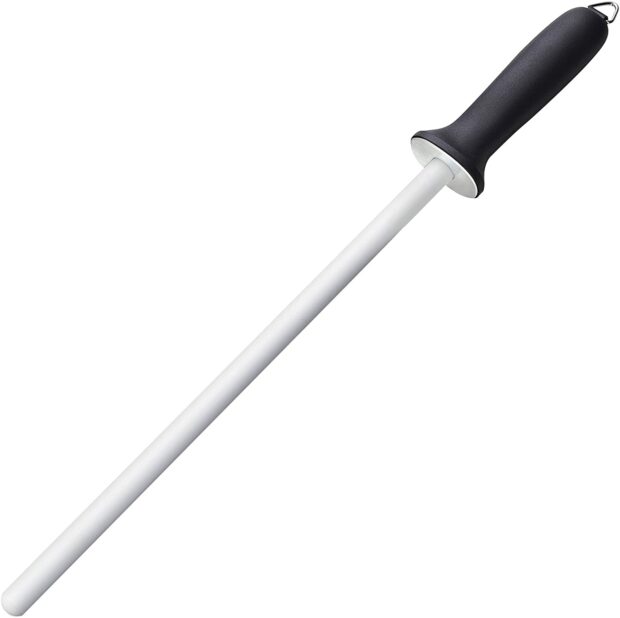Serrated knives are not as easy to sharpen as flat knives, but the good news is that they need a lot less attention. The pointed teeth on a serrated blade are the hardest workers. This means that there is less friction on the recessed edges and hence the blade stays sharp for longer.
The truth is that with use every knife, even those with serrations, will lose their edge. So, the question is, how can you sharpen a serrated knife?
Serrated Knives are Hard Wearing
Because of their design, serrated knives will continue to work adequately even when they are no longer very sharp. They also take a lot longer to lose their edge because the sharp edges of the gullets are protected from damaging contact with the board as the points take the knock.
How You Can Sharpen a Serrated Knife
Because sharpening a serrated knife is not easy, many people prefer to send theirs to the professionals, who have the best knife sharpening tools to handle every type of blades. However, sending your knives away can be inconvenient, so it’s nice to know that the home sharpening of a serrated blade is not difficult.
The correct way to sharpen a serrated blade is to deal with each serration separately. Every serrated knife has a flat side. The other side has chisel ground serrations that should be sharp, but that will get blunter with use. The flat side requires no sharpening, but each of the recessed sections will eventually need some attention.
Pull-through Knife Sharpeners
While pull-through knife sharpeners offer you the quickest and easiest way to sharpen your kitchen knife set, they are not the ideal choice for your bread knife. You can, however, run the knife through the fine slot to gently hone the blade. You should never run a blade with micro-serrations through a pull-through sharpener.
There are also a number of electric pull-through sharpeners that are designed specifically for serrated blades, but even these are not as effective as a sharpening rod.
The best way to sharpen your favorite bread knife is to apply some patience and elbow grease.
Using a Ceramic Sharpening Rod
Image url, please remove when publish on website:

If your knife has not been sharpened for a long time and if the points are bent, the sharpening rod will yield the best results. A ceramic sharpening rod is harder than a steel rod. It is also smaller and tapers so it has various sizes along the length of the rod to deal with different gullet sizes.
Method
- The sharpening rod should fit into each of the serrations so that you can sharpen each gullet individually.
- When sharpening the serrations you must match the angle of the rod with the angle of the serration.
- Move the rod slowly away from the serrated edge of the knife.
- Repeat four or five times before moving on to the next serration.
- When you’re done there should be burrs on the back of the blade. Run it over a sharpening stone to get rid of any accumulated burrs.
Other Methods
If you really don’t want to take the time required to sharpen your knife with a sharpening rod, you could invest in a knife sharpening kit comprised of V-shaped ceramic rods. This is still a manual system but it takes a little less effort than a sharpening rod. All you need do is run the serrations along the rods to sharpen the edges.
Serrated knives don’t often require attention, but it’s good to know that when they do a little bit of time and effort can restore their original cutting edge. Sharpening a serrated knife is not difficult, but it is time-consuming and requires a little patience.



